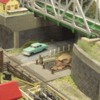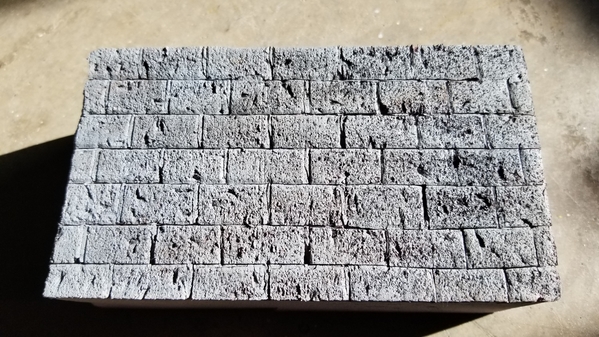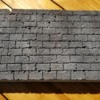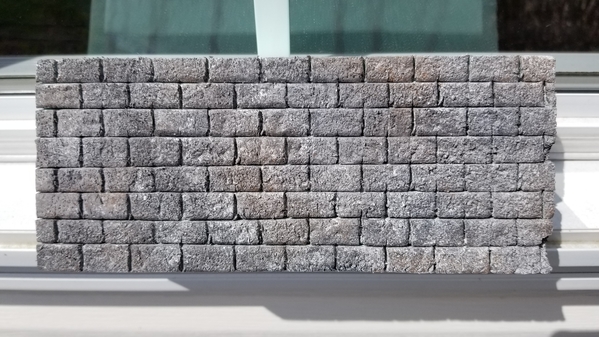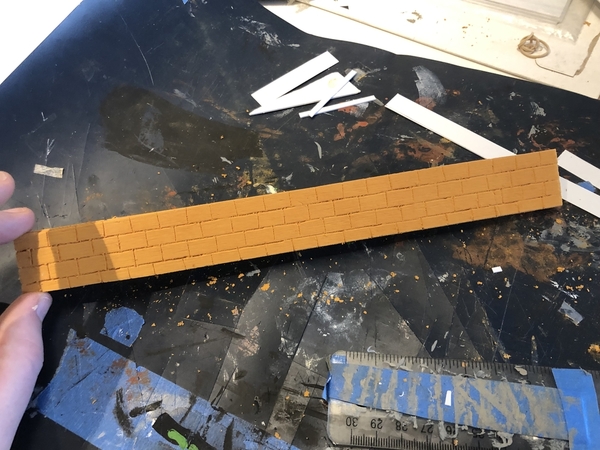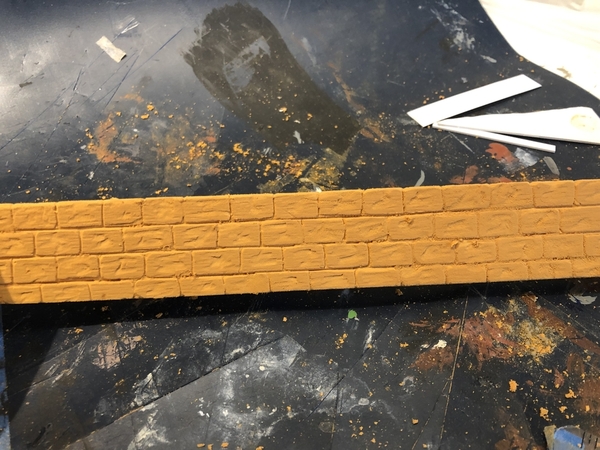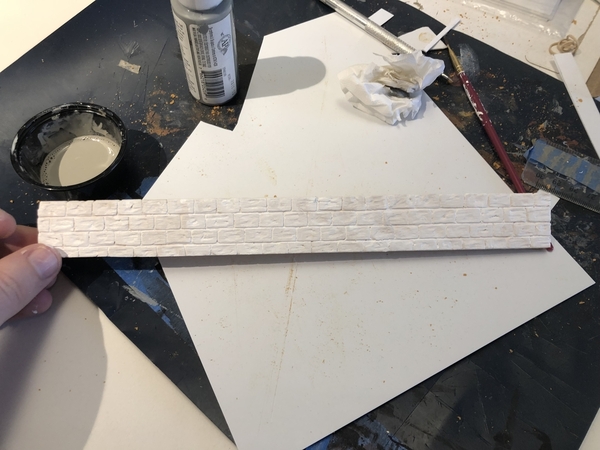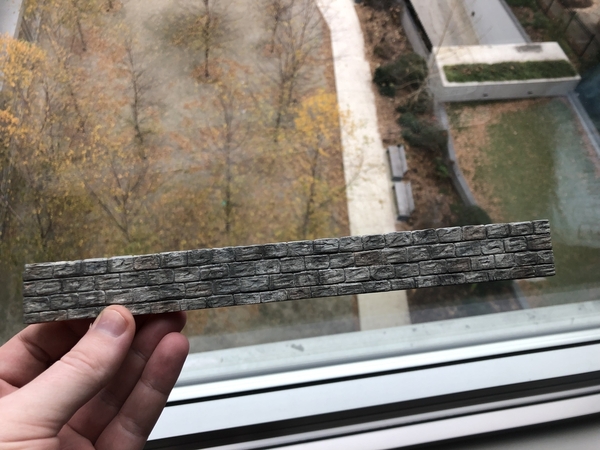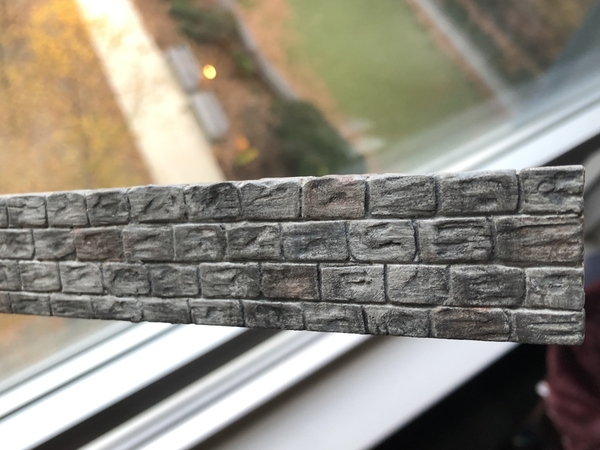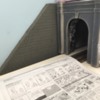Vacuefactor: Yes my method is very similar to the the very first post in this thread. I used slightly different tools, but the theory was the same and the results similar.
My blocks are 7/16 " high x 7/8 " wide. I typically used a sharp lead pencil to scribe the lines, and then kept dull pencil tips and old Bic Ball point pens around to get a 'chamfer" at the mortar line.
To get some texture in the face of the blocks, I took a couple of pieces of broken granite we picked up in Acadia NP in Maine, it has to have a really rough broken face and edges to "imprint" a pattern into the foam. I never tried the "rasp" but that's not a bad idea. The pieces of granite I had on had were between the size of golf ball and baseball, and you just have to press and roll it around to imprint texture. Since the results aren't always consistent, I can happily report that you can go back add imprinting texture after the primer coat, and even after the weathering washes have been applied if you feel like some sections of the wall are too smooth. Same thing goes for deepening mortar lines if you have some that look too thin.
As far as coloring goes, you'll just have to experiment. I start with rattle can gray primer, stay at least 12 inches away and prime the surface lightly. Then I use a stamping method to blotch on 50% to 75% diluted shade of gray. I use a lot of a color called" Pewter Gray craft paint. I use a an old round brush, pretty beat up, and stamp the diluted grays darker and lighter than the primer trying not to completely bury the surface. If it's your first attempt at doing this, I'd probably recommend you dilute this stamping wash even more, so some of the base coat shows through, 10 drops of paint to 25 to 30 drops off water should keep you from ending up with blotches that are too solid. You can always go back over areas that need more, but once you lay down too much of the latex acrylic craft paints, it's tough to get a natural look. If I catch it when I am doing it, I'll dip the brush in water and keep stamping the area to dilute the spot that just got overpainted.
You just have to "go for it". If the first attempt doesn't work, you can go back over it with subsequent coats. It's a hard process to describe. I can tell you I didn't achieve those results on the first try.
Also I highly recommend you keep a pad of paper nearby and write down what you mixed up and how you did it so you can repeat it again later. I didn't do that for these foam block walls, but have since written down as best I can all my weathering formulas for other projects, ie. concrete walls and sidewalks, Pennsy Stone Block walls in burnt umber color etc.
To create some "highlights" you can dry brush light gray or even white, but my experience is you have to remove 80% of the paint from the brush on some scrap cardboard or paper before getting near your wall. Again applying too little no big deal, apply too much and you just created a headache and more work trying to go over it and "do it again".





